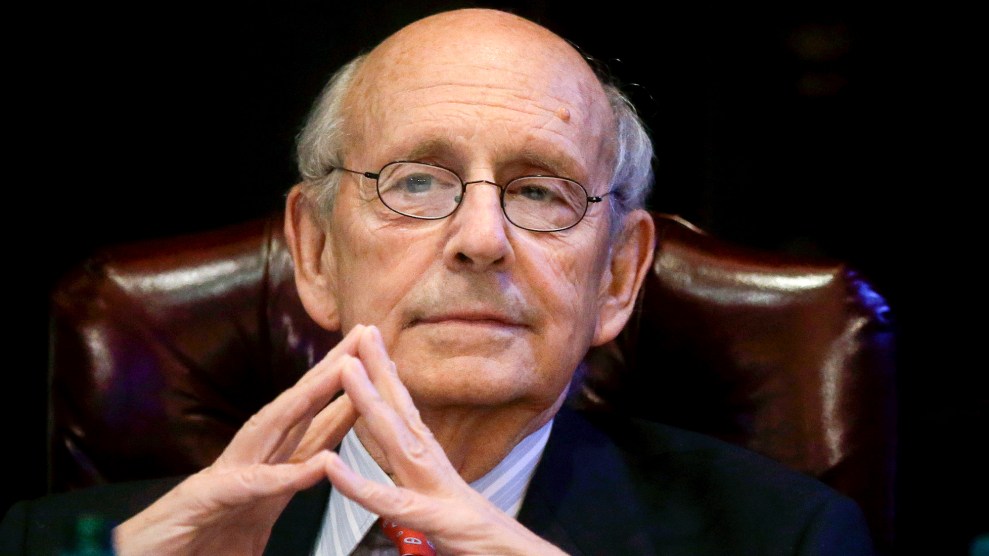
Supreme Court Justice Stephen Breyer Steven Senne/AP Photo
Supreme Court Justice Stephen Breyer has been on something of a media blitz this past week, giving a series of well-publicized interviews about his new book, The Authority of the Court and the Peril of Politics. Today, he appeared on Fox News Sunday with Chris Wallace, where he once again disappointed Democrats by refusing to say when he might retire.
Liberals are desperately hoping the 83-year-old jurist will step down soon, while there’s a Democrat in the White House and the partly still narrowly controls the Senate. They fear that if Breyer doesn’t call it a career, he will join the late Ruth Bader Ginsburg in being replaced by an arch conservative who will undo any legacy of progress he had hoped to achieve. But the justice has shown no signs of budging.
Breyer, the avuncular former Harvard law professor best known for issuing mind-boggling legal hypotheticals from the bench, has been stubbornly resisting those calls, even while milking the speculation for coverage of his new book. Over the past week, he’s given an unusual number of media interviews—interviews that have been, as most Supreme Court justice interviews are, rather opaque and pedantic and not especially newsworthy. On Fox, after waving around his pocket Constitution like a bespectacled Ammon Bundy, Breyer launched into a discussion about Alexander Hamilton and a civics lesson on the three branches of government, before Wallace got to the question on everyone’s mind: his potential retirement.
Wallace showed Breyer a clip of the late Justice Antonin Scalia, who said in no uncertain terms back in 2012 that he did not want a Democratic president to replace him with someone who would undo all the work he’d done over 25 years to move the court to the right. In response, Breyer said, “I don’t intend to die on the bench,” but beyond that, he explained that he didn’t retire this spring because, well, he didn’t want to. “I didn’t retire, because I decided on balance that I wouldn’t retire,” he said.
But have you heard he has a new book out?
WATCH: Supreme Court Justice Stephen Breyer discusses retirement on #FoxNewsSunday pic.twitter.com/tQEIu8Qgv8
— FoxNewsSunday (@FoxNewsSunday) September 12, 2021
















